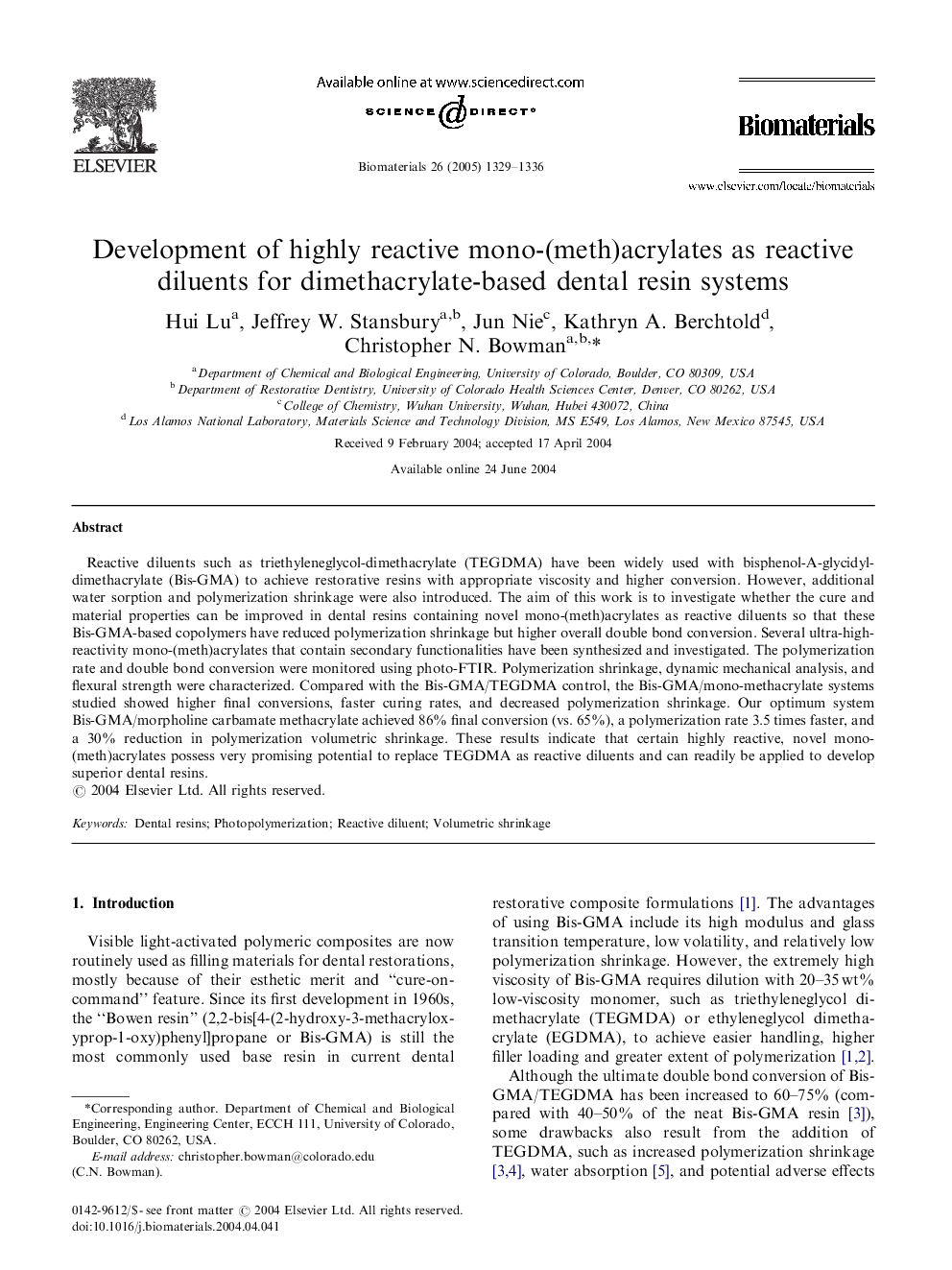| Article ID | Journal | Published Year | Pages | File Type |
|---|---|---|---|---|
| 10230213 | Biomaterials | 2005 | 8 Pages |
Abstract
Reactive diluents such as triethyleneglycol-dimethacrylate (TEGDMA) have been widely used with bisphenol-A-glycidyl-dimethacrylate (Bis-GMA) to achieve restorative resins with appropriate viscosity and higher conversion. However, additional water sorption and polymerization shrinkage were also introduced. The aim of this work is to investigate whether the cure and material properties can be improved in dental resins containing novel mono-(meth)acrylates as reactive diluents so that these Bis-GMA-based copolymers have reduced polymerization shrinkage but higher overall double bond conversion. Several ultra-high-reactivity mono-(meth)acrylates that contain secondary functionalities have been synthesized and investigated. The polymerization rate and double bond conversion were monitored using photo-FTIR. Polymerization shrinkage, dynamic mechanical analysis, and flexural strength were characterized. Compared with the Bis-GMA/TEGDMA control, the Bis-GMA/mono-methacrylate systems studied showed higher final conversions, faster curing rates, and decreased polymerization shrinkage. Our optimum system Bis-GMA/morpholine carbamate methacrylate achieved 86% final conversion (vs. 65%), a polymerization rate 3.5 times faster, and a 30% reduction in polymerization volumetric shrinkage. These results indicate that certain highly reactive, novel mono-(meth)acrylates possess very promising potential to replace TEGDMA as reactive diluents and can readily be applied to develop superior dental resins.
Related Topics
Physical Sciences and Engineering
Chemical Engineering
Bioengineering
Authors
Hui Lu, Jeffrey W. Stansbury, Jun Nie, Kathryn A. Berchtold, Christopher N. Bowman,
